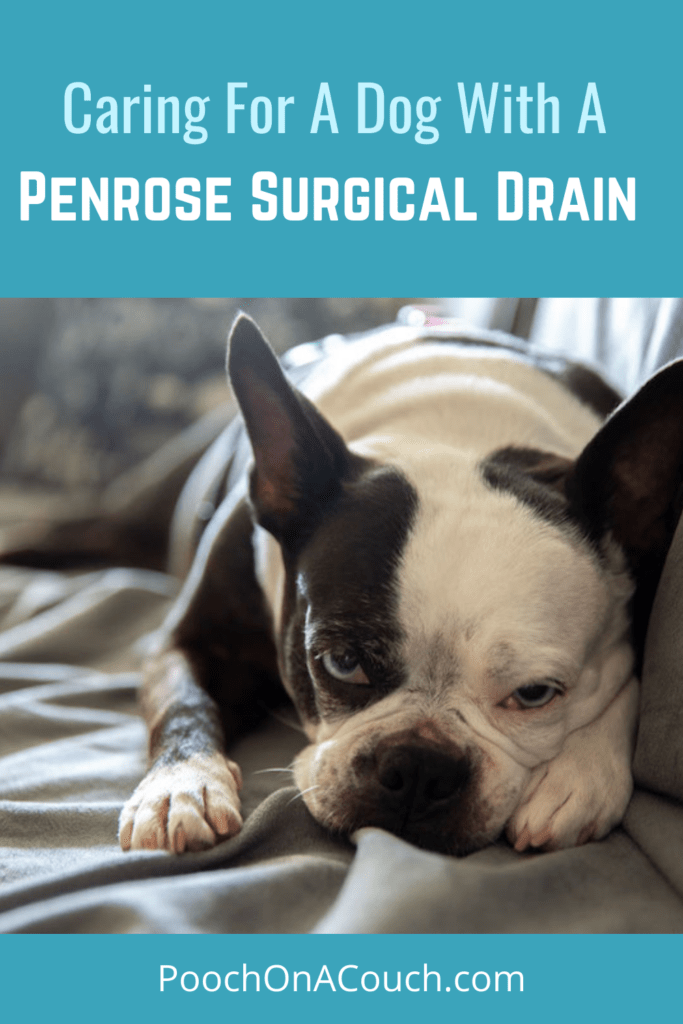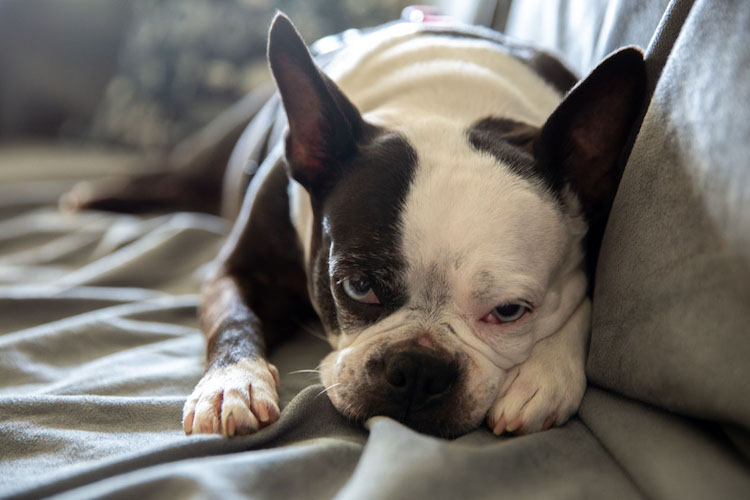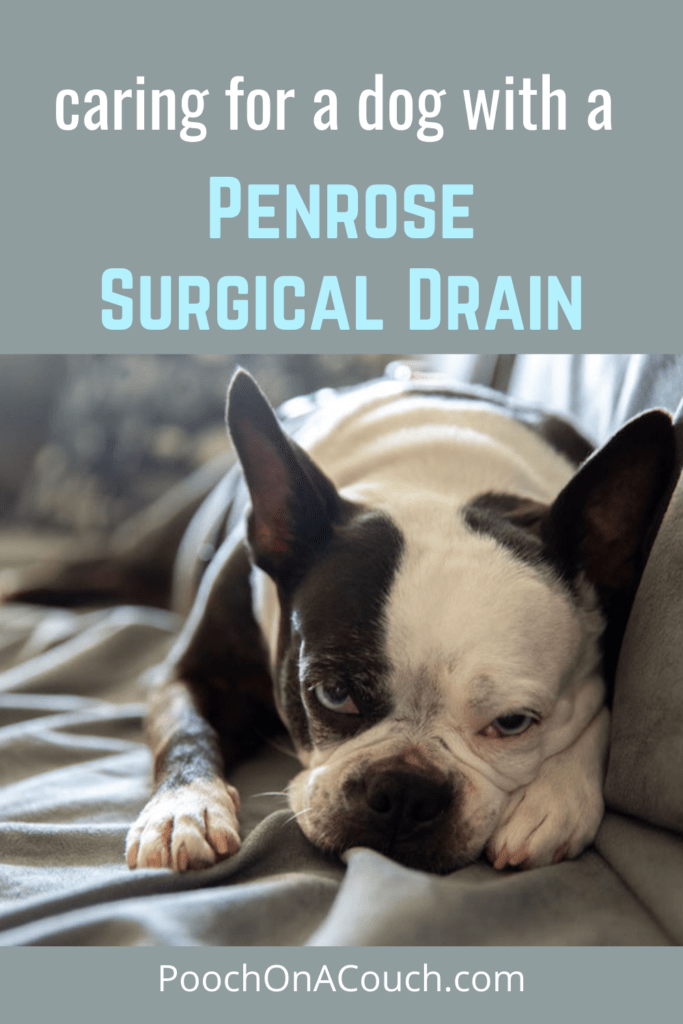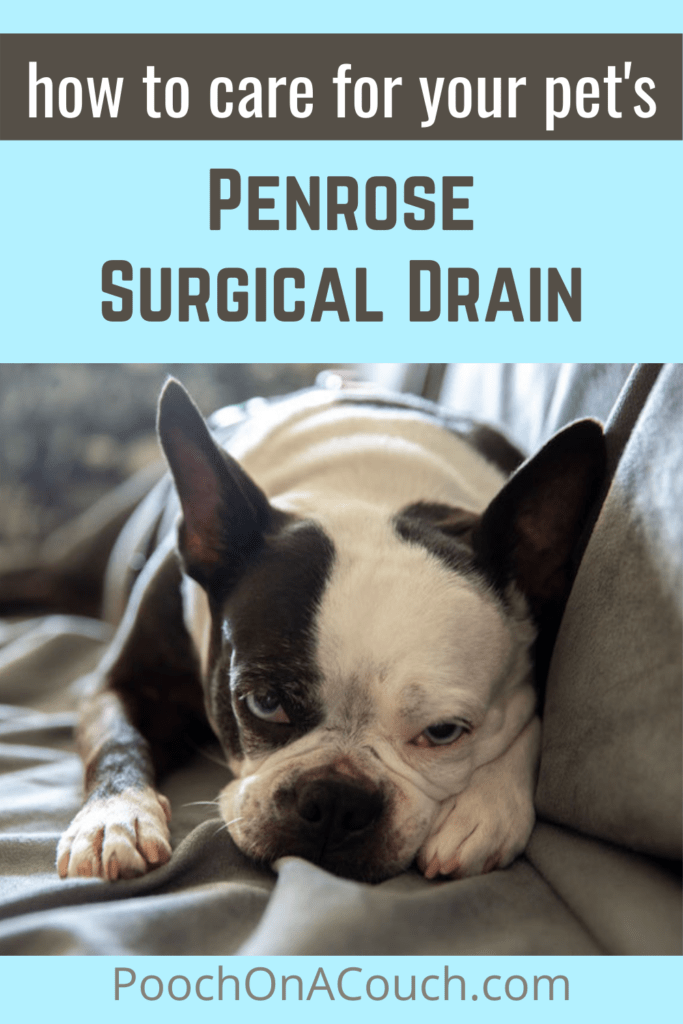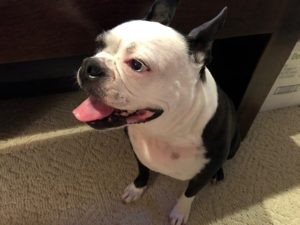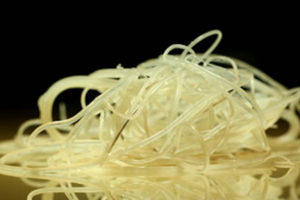I’m amazed that after fostering 40+ dogs, now is the first time I’ve ever fostered a dog who has a surgical drain.
Sassy Blue’s mammary tumor removal surgery was extensive enough that surgical drains were needed. I was a bit shocked when they brought Sassy out to me after her mastectomy. She had these tubes poking out of her and they were bloody. It was scary to think about what I would need to do to care for her.
What are these drains anyway? What do they do? Why are they used? I didn’t know the answers, so I decided to learn more about them.
If you foster with any regularity, a foster dog in your care may require a surgical drain. Here’s what I’ve learned.
The Penrose Surgical Drain
That’s fancy sounding, Huh?
A Penrose drain is a soft, flexible rubber tube used as a surgical drain, to prevent the buildup of fluid in a surgical or injury site. The Penrose drain is named for American gynecologist Charles Bingham Penrose (1862–1925) (Thanks, Wiki!) and is used in many types of surgeries on humans and animals.
The difference in surgical drains with pets is – they don’t get the nice little fluid containment bag that humans sometimes get. Someone should work on that!
These surgical drains are placed near the surgery or injury site, using a separate incision just big enough to allow the tube to pass through, after which the tubes are sutured in place. Some procedures/injuries require one drain, other sites can have multiple drains. Sassy had two, one near the top of her incision, the other at the bottom of her incision.
In dogs, (and cats) a Penrose surgical drain might be used as part of a surgical protocol, an injury protocol, or an abscess protocol.
Penrose surgical drains aid the body in healing by relieving the affected site of excess fluid and by helping prevent infection. Surgical drains play an important role in your pet’s recovery from involved surgeries or certain wounds.
Sassy’s Penrose Surgical Drain
Here is a simple diagram of Sassy’s surgery site. I didn’t want to share a photograph of her surgery site as it is a bit graphic. Her incision is 7″-8″ long with significant bruising and active drainage. Yuck.
Image – illustration of sassy’s penrose drain
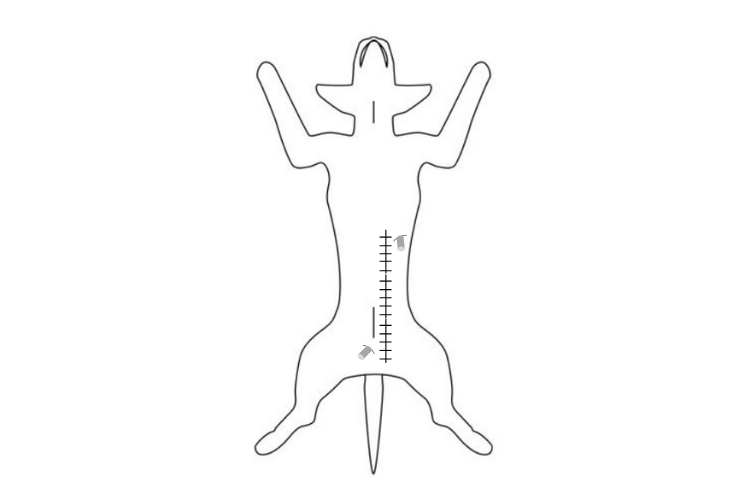
What You Need To Know About Penrose Surgical Drains
First, these surgical drains are not as scary as they look or as overwhelming as the mess they make! Although, if you aren’t prepared for the mess, it can frighten you!
As the name implies, surgical drains well… they drain body fluid. This drained fluid is often tinged red with blood. Sometimes, the fluid drains out in little droplets, but other times, particularly if your pet has been in one position for a while, the fluid can pool under the skin and then come out all at once, by the teaspoon!
You will want to be prepared for the mess a surgical drain can make.
Are you a bit squeamish? Does the sight of things the color of blood bother you? Well… I might not be able to help you. There’s a lot of “red”. Surgical drains in dogs can look gross to some people.
Surgical drains are not hard to care for, but you do need to make preparations to care for a dog who has a surgical drain.
Here’s what I learned from caring for Sassy’s Penrose drain.
- Be prepared for the ride home from the vet
I always have dog beds and blankets and crates in my car, and it’s a good thing! Sassy drained measurable amounts of bloody fluid during the ride home. If you don’t have a blanket for the ride home, ask if the veterinarian clinic can loan you a towel to put over your seat. Sassy rode home in her dog bed instead of the crate because quite frankly, it was too small for her and the plastic cone she was wearing! - Be prepared to use the cone of shame
Your dog usually must wear an Elizabethan collar. I know we all hate the cone of shame and our pets dislike them more, but honestly, our pets get used to them a lot faster than we do. Need tips to help you and your dog adjust to the cone of shame? Check out my post 9 ways to help your dog adjust to wearing the cone of shame. - Prepare your pet’s recovery space
Most likely, the dog will be on some sort of activity restriction. Sassy is under pretty strict confinement orders.
Your foster pet will likely need more room than their current crate provides.
I upsized Sassy’s crate two sizes -I wanted her to be able to turn around WITH the Elizabethan collar on. I also know she is well-behaved behind an x-pen and won’t try to escape. Not only do I think she’d appreciate the extra space, but it’s also a heck of a lot easier for me with access to her when she’s in an x-pen than when she’s far inside her crate! I set up her x-pen in the living room and put her upsized crate in the bedroom for her nighttime space.
Knowing there will be a mess as the drain does its job, make sure you have plenty of absorbent material, and choose your layers carefully as they may become stained. In Sassy’s daytime digs, she’s on the carpet so I borrowed ideas from my how to quarantine protocol and used multiple layers to ensure the carpet isn’t damaged. - Prepare to wash loads of laundry
Enough said. I think I did three loads of laundry a day. - Prepare to keep your pet’s surgical area clean and dry.
The fluid gets on the bedding, but it also gets on your pet’s fur and skin and can cause mild irritation. You’ll want to carefully give your foster dog a gentle wipe with a mildly damp cloth on the areas adjacent to the surgical drain if you see any evidence of fluid on the body. Remember to keep the sutures nice and dry!
I always washed my hands before cleaning near the surgical site and I never put a bandage over the drain. Sometimes the best thing for a wound is to get air and to stay dry. Bandages sometimes trap moisture and certainly prevent air from getting to the surgical site. - Prepare for some loss of sleep.
This is particularly true if your foster dogs sleep in the bed with you and you’ve now asked them to alter their expectations because, well let’s face it: You don’t want your own bedsheets to get all messy. (Want to know why your foster dog shouldn’t sleep in the bed with you?)
I always expect to lose some sleep the first night or two following surgery for one of my foster dogs. Anesthesia is hard on pets and sometimes it takes 24-36 hours or even a little longer for the full effects of anesthetic drugs to wear off. My foster dogs usually need some extra TLC and comfort in those first hours after anesthesia. - Prepare for an extra day or two of mess AFTER the drain comes out.
I didn’t know this: the vets don’t suture the holes shut after they remove the tube. These little incisions are so small, they will close up on their own. That said, there is still some leakage for a couple of days. It is minute, nothing compared to what came out of Sassy’s drain the first day she came home. - Prepare for the responsibility of keeping your other animals away from the drain tubes.
This is why I strongly suggest you prepare your animal’s recovery space in advance. Dogs are often curious about new things. If their friend comes home with little rubber hoses protruding from their body, a dog is going to want to investigate.
Drain tubes smell interesting, look interesting, and if given the opportunity, might taste interesting. A dog might think it’s a toy of some sort and try and pull on it. That’s not a good thing.
Protect your recovering foster dog. Keep it’s friends away for the few days the drain will be in place. - Be prepared to adapt your leash walking routine.
Because of the location of Sassy’s incisions, she couldn’t wear a harness. She is also not totally leash trained, meaning Sassy likes to go where Sassy wants to go. She’s not fast, so that’s good, but she does pull. A collar is hard on her. Most of the time, Sassy meandered in the yard, but a time or two, she was a bit frisky and wanted to pick up the pace. Not run, mind you. Sassy doesn’t run. But she made me trot to keep up. I don’t run either.
You may be instructed to not allow your dog to navigate stairs or jump up to or down from elevated objects. Sassy was not allowed to. I had to pick her up and carry her. I was grateful she wasn’t a giant breed. Those of you with giant breeds, how do you navigate staircases when you have a dog recovering and not allowed to navigate stairs? - Finally, be prepared to stay the course with your dog’s post-surgical instructions.
Even with the surgical drain removed, your foster dog had major surgery or is still recovering from injury and needs protection. Sassy’s restrictions are for 10 days “or until her re-check”. Surgical procedures are not cheap. Usually, our pets heal up just fine but they need our help to keep them safe while their bodies do the work. Toughen up, embrace the cone, welcome the huge x-pen compound in the center of your living room, join your dog for potty breaks by leash walking them, and keep them calm and quiet.
Have you ever had to care for a dog with a Penrose surgical drain? What did you experience? What did you learn? Did you discover any helpful tips that might help others? Share your experiences in the comments!
